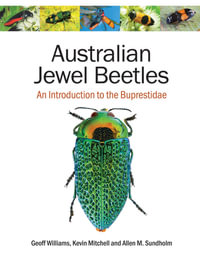Preface, L. Piper and A. Ruvinsky 1. Systematics and phylogeny of the sheep, I.R. Franklin 2. Genetic aspects of domestication, common breeds and their origin, K. Maijala 3. Genetics of colour and hair texture, D.P. Sponenberg 4. Genetics of morphological traits and inherited disorders, F.W. Nicholas 5. Biochemical genetics, L. Di Stasio 6. Molecular genetics of sheep, B.C. Powell 7. Molecular genetics of immune molecules, W.R. Hein 8. Genetics of disease resistance and vaccine response, H.W. Raadsma, G.D. Gray, and R.R. Woolaston 9. Molecular biology and genetics of scrapie in sheep, N. Hunter 10. Cytogenetics: Physical chromosome maps, T.E. Broad, H. Hayes, and S.E. Long 11. The sheep linkage map, G.W. Montgomery and A.M. Crawford 12. Genetics of behaviour, G.N. Hinch 13. Biology and genetics of reproduction, I.W. Purvis and M. Hillard 14. Modern reproduction technologies and transgenics, I. Wilmut, K.H.S. Campbell, and L. Young 15. Development genetics, N.E. Crockett 16. Genetic resources and conservation, R.W. Ponzoni 17. Genetic improvement of wool production, K.D. Atkins 18. Genetics of lamb and meat production, R.G. Banks 19. Genetics of meat quality, J.M. Thompson and A.J. Ball 20. Genetics of milk production, F. Barillet 21. Genetic improvement of sheep, B.P. Kinghorn 22. Standardized genetic nomenclature for sheep, C.H.S. Dolling
Industry Reviews
"A generation or more ago I was asked if I would be interested in exploring sheep genetics, then a neglected subject. . . . The variability within breeds puzzled me until a buyer told me he had selected a particular ram because "it had a strong face." The genetics of sheep reflected not just how they had adapted, historically, and their environments, but was the subject of 11,000 years of human fashion. It seemed unlikely that sheep would be good subjects for genetic research. Since then much has changed, as this encyclopedic volume records. . . . It starts, of course, with a (dubious) history of breeds; and there are detailed descriptions of cross-breeds. . . . There is an excellent, well-balanced article on scrapie, the prion disease that is so much in the news. Administrators should be compelled to read this chapter, if nothing else, since they might become more modest in their assertions."--The Quarterly Review of Biology "A generation or more ago I was asked if I would be interested in exploring sheep genetics, then a neglected subject. . . . The variability within breeds puzzled me until a buyer told me he had selected a particular ram because "it had a strong face." The genetics of sheep reflected not just how they had adapted, historically, and their environments, but was the subject of 11,000 years of human fashion. It seemed unlikely that sheep would be good subjects for genetic research. Since then much has changed, as this encyclopedic volume records. . . . It starts, of course, with a (dubious) history of breeds; and there are detailed descriptions of cross-breeds. . . . There is an excellent, well-balanced article on scrapie, the prion disease that is so much in the news. Administrators should be compelled to read this chapter, if nothing else, since they might become more modest in their assertions."--The Quarterly Review of Biology "A generation or more ago I was asked if I would be interested in exploring sheep genetics, then a neglected subject. . . . The variability within breeds puzzled me until a buyer told me he had selected a particular ram because "it had a strong face." The genetics of sheep reflected not just how
they had adapted, historically, and their environments, but was the subject of 11,000 years of human fashion. It seemed unlikely that sheep would be good subjects for genetic research. Since then much has changed, as this encyclopedic volume records. . . . It starts, of course, with a (dubious)
history of breeds; and there are detailed descriptions of cross-breeds. . . . There is an excellent, well-balanced article on scrapie, the prion disease that is so much in the news. Administrators should be compelled to read this chapter, if nothing else, since they might become more modest in their
assertions."--The Quarterly Review of Biology "A generation or more ago I was asked if I would be interested in exploring sheep genetics, then a neglected subject. . . . The variability within breeds puzzled me until a buyer told me he had selected a particular ram because "it had a strong face." The genetics of sheep reflected not just how
they had adapted, historically, and their environments, but was the subject of 11,000 years of human fashion. It seemed unlikely that sheep would be good subjects for genetic research. Since then much has changed, as this encyclopedic volume records. . . . It starts, of course, with a (dubious)
history of breeds; and there are detailed descriptions of cross-breeds. . . . There is an excellent, well-balanced article on scrapie, the prion disease that is so much in the news. Administrators should be compelled to read this chapter, if nothing else, since they might become more modest in their
assertions."--The Quarterly Review of Biology
























